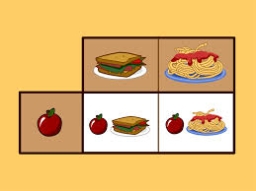Which 7
Which choice is NOT equivalent to the following expression? 9 x { [ 14 ÷ 2 + (4-1) ] - 8 }
A 9 x { 10 - 8 }
B 9 x { [ 14 ÷ 2 + 3] - 8 }
C 9 x 10 - 8
D 18
A 9 x { 10 - 8 }
B 9 x { [ 14 ÷ 2 + 3] - 8 }
C 9 x 10 - 8
D 18
Final Answer:

You need to know the following knowledge to solve this word math problem:
algebranumbersGrade of the word problem
Related math problems and questions:
- Consider 2
 Consider the following formula: y = 3 ( x + 5 ) ( x - 2 ). Which of the following formulas is equivalent to this one? A. Y=3x²+9x-30 B. Y=x²+3x-10 C. Y=3x²+3x-10 D. Y=3x²+3x-30.
Consider the following formula: y = 3 ( x + 5 ) ( x - 2 ). Which of the following formulas is equivalent to this one? A. Y=3x²+9x-30 B. Y=x²+3x-10 C. Y=3x²+3x-10 D. Y=3x²+3x-30. - Evaluation order quiz
 Which of the following is NOT true about the expression given below? (10 +4)²- 25 ...
Which of the following is NOT true about the expression given below? (10 +4)²- 25 ... - Simplify
 Simplify expression - which expression is equivalent to: 3(m + 2) − 4(2m − 9)
Simplify expression - which expression is equivalent to: 3(m + 2) − 4(2m − 9) - Expression 68414
 The expression 3x - [2 - (2x - 1) + x] is given. Determine for which number x the expression is equal to 0.
The expression 3x - [2 - (2x - 1) + x] is given. Determine for which number x the expression is equal to 0. - Expression 8
 Evaluate this expressions: a) 5[3 + 4(2.8 - 3)] b) 5×(8-4)÷4-2
Evaluate this expressions: a) 5[3 + 4(2.8 - 3)] b) 5×(8-4)÷4-2 - Equivalent expression 3
 Ariel needs to calculate 12×8-6×8. Which expression will give Ariel the same answer? A.8×(12-6) B.8×(12-8) C.(12×6)-(8×8) D. (12×6)-(8+8)
Ariel needs to calculate 12×8-6×8. Which expression will give Ariel the same answer? A.8×(12-6) B.8×(12-8) C.(12×6)-(8×8) D. (12×6)-(8+8) - Evaluate - order of ops
 Evaluate the expression: 32+2[5×(24-6)]-48÷24 Pay attention to the order of operation, including integers.
Evaluate the expression: 32+2[5×(24-6)]-48÷24 Pay attention to the order of operation, including integers.
